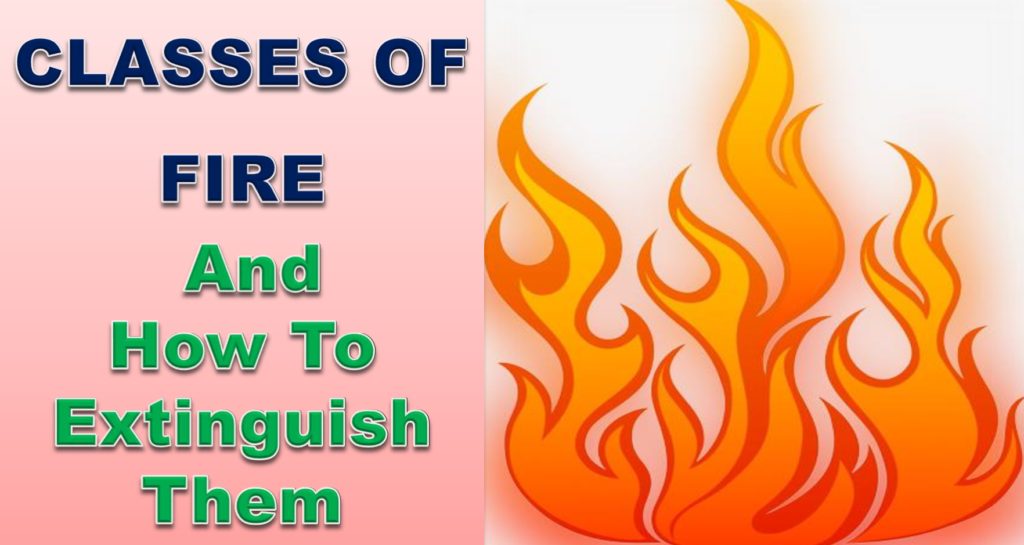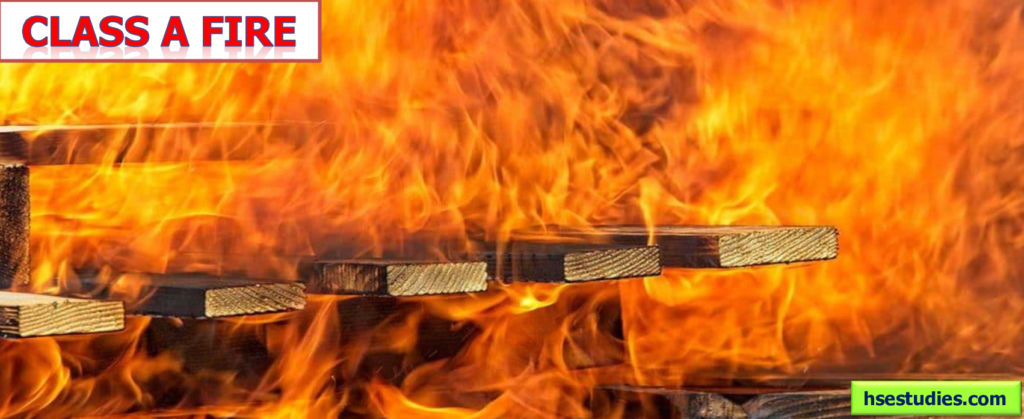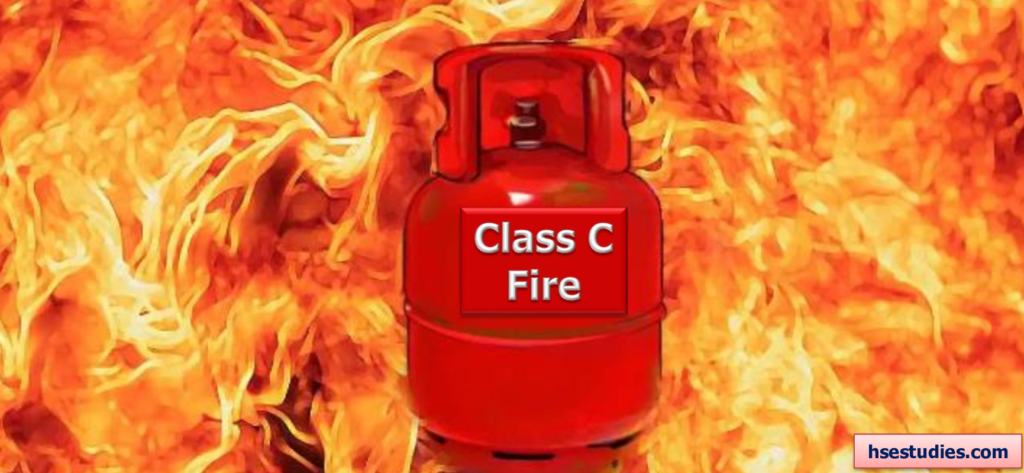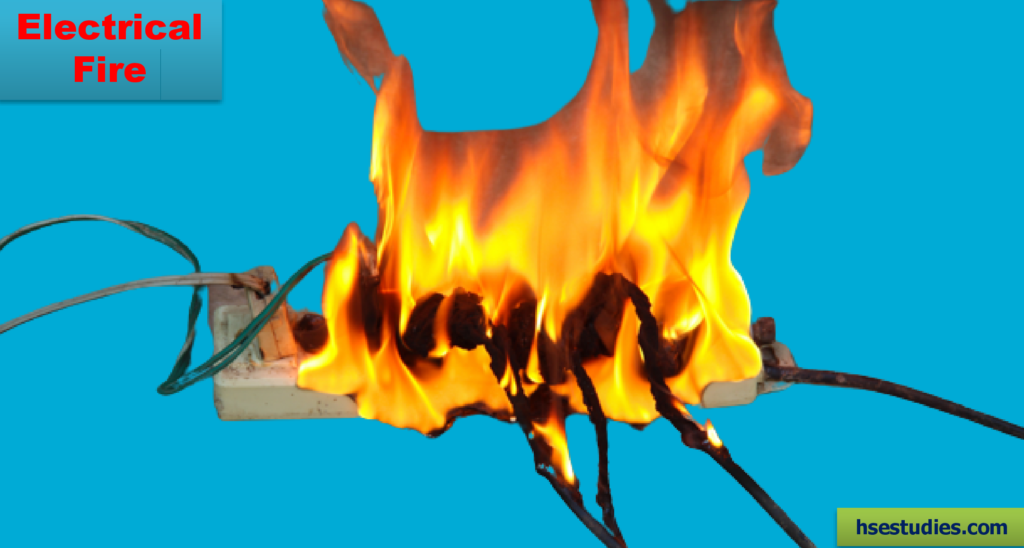
The 6 different classes of fire include Class A (Solids), Class B (Liquids), Class C (Gases), Class D (Metals), Electrical Fires, and Class F (Cooking fats & oils).
It must be understood that not every fire is the same. Different classes of fire have different types of hazards & risks, and extinguishing them with the wrong fire extinguishers could significantly do more harm than good.
Fire can cause severe injury, property damage, loss of lives, damage to buildings & equipment, and interruption to business activities.
The best way to make sure that fire doesn’t impact you or your business is Fire Prevention. You should have a proper plan to deal with fires before they occur. Fire can quickly spread when it does start. Knowing how to attack a fire is not always easy because not every fire is the same.
There are six different classes of fire, depending on the “FUEL” that is burning.
- Class A (Solids)
- Class B (Liquids)
- Class C (Gases)
- Class D (Metals)
- Electrical Fires
- Class F (Cooking fats & oils)
The 6 Different Classes Of Fire (And How To Extinguish Them)
1. Class A (Solids)
Class A fires involving solids fuel like wood, textiles, plastics, papers, and cardboard that are common in offices and manufacturing. It could also include building structures & furniture. Class A fire is the most common fire because solids are the most common fuel and one that is tough to eliminate. Proper housekeeping could also reduce the risks of solid fire by properly segregating solid waste.
How to extinguish Class A fire
- Water Fire Extinguisher
- Foam Fire Extinguisher
Water and foam extinguishers are the best type of fire extinguisher for extinguishing Class A fires. Water is the most effective for Class A fire involving solid fuels like wood, papers, plastics, cartons, cardboard, textiles, etc. But, as a conductor, don’t use it near electrical equipment.
Wet chemical and powder types fire extinguishers also have limited suitability for Class A fire.

2. Class B (Liquids)
Class B fires involve liquid fuels like paints, thinners, cleaning fluids, solvents, petrol, diesel, and adhesives used in the workplace can be highly flammable or explosive. Class B fire is more common in industries with large quantities of flammable liquids. Class B type of fire is rare but more deadly than other classes of fire.
Ensure that you know what flammable liquids are being used in your workplace, and conduct a COSHH assessment because this is a legal requirement for any hazardous substances. These substances must be stored and used safely. Keep these substances in labeled containers, and maintain a safe distance from ignition sources.
How to extinguish Class B fires
- DCP (Powder) Fire Extinguisher
- Foam Fire Extinguisher
Foam and powder fire extinguishers are the most effective for Class B fires. A CO2 fire extinguisher can also be used for Class B fires because it has limited suitability for Class B fires.
3. Class C (Gases)
Class C fires involve gases, such as natural gas, LPG, acetylene, propane, and other flammable gases that can form a flammable or explosive atmosphere. Working with gases is dangerous due to the high risks of fire & explosion. Gases must be stored in sealed containers at a designated storage area, and gas work must be carried out by trained & competent persons only.
How to extinguish Class C fires
- DCP (Powder) Fire Extinguisher
- Shut Off The Gas Supply
The most effective method to extinguish Class C types of fires is to shut off the gas supply. Once the gas supply is shut off, the best fire extinguisher to put out the Class C fire is a dry powder fire extinguisher.

4. Class D (Metals)
Typically, metals are often not thought of as a combustible material. But, some types of metals are there, which can burn, such as aluminum, potassium, sodium, magnesium, titanium, etc. These all combustible metals have the potential to combust when in powder or dust form. Metals will get soft and melt at high degrees of temperature, which can cause buildings or warehouses to collapse if the metal joints and columns are present in a fire as structural elements.
Don’t use a water type of fire extinguisher for Claas D fires. A water extinguisher can significantly increase the metal fires.
How to extinguish Class D type of fire
- DCP (Powder) Fire Extinguisher
DCP (Powder) fire extinguisher is the most effective and suitable for Class D type of fire. Minor metal fires can be smothered by using dry soil & sand.
5. Electrical Fires
Electrical fires are often caused by faulty electric equipment, loose connections, overloaded outlets & circuits, defective or frayed cords, improper use of extension cords, etc. Improper installation and maintenance of electric wires can also cause an electrical fire. Fires in live electrical equipment are an additional hazard.
Proper installation, inspection, and maintenance of electrical equipment can reduce the risk of electrical fires.
Don’t use water and foam extinguishers to put out this fire or any other conductors because they can give you a fatal electric shock.
How to extinguish an electrical fire
- CO2 Fire Extinguisher
The most suitable type of fire extinguisher to put out an electrical fire is carbon dioxide (CO2) fire extinguisher. For low voltage, dry powder fire extinguishers are also suitable. But, first of all, you must turn off the power supply if you can do that safely.

6. Class F (Cooking fats & oils)
Spillage of flammable oils near the source of heat and deep-fat frying in the kitchen can cause Class F fires. Class F fires are the most common in commercial kitchens but can also happen in homes.
Ensure that you are never leaving cooking food and frying equipment in unattended condition in the kitchens. These fires are hard to extinguish due to hot oil, and fires can be spread more if using the wrong type of extinguisher.
How to extinguish Class F fire
- Fire Blanket
- Wet Chemical Fire Extinguisher
Only wet chemical fire extinguisher is approved for Class F fires (cooking oils & fats). For minor Class F fires, Fire blankets could be used as well.
Conclusion
Fires can be dangerous, but by understanding different classes of fire and how they can be extinguished, fire incidents can be prevented, and the risks associated with fires can be minimized. In this article, six classes of fire and how they can be extinguished have been explained that you must know to prevent fire incidents.
Q1. What Is The Type Of Fire?
Ans. There are six different types of fire, depending on the “FUEL” that is burning.
Class A (Solids)
Class B (Liquids)
Class C (Gases)
Class D (Metals)
Electrical Fires
Class F (Cooking fats & oils).
Q2. What Are The Causes Of Electrical Fire?
Ans. Electrical fires are often caused by faulty electric equipment, loose connections, overloaded outlets & circuits, defective or frayed cords, improper use of extension cords, etc. Improper installation and maintenance of electric wires can also cause an electrical fire.
Q3. What Are The Control Methods Of Electrical Fire?
Ans. Proper installation, inspection, and maintenance of electrical equipment can reduce the risk of electrical fires.
Q4. Which Fire Extinguisher Is Suitable For Class A Fire?
Ans. Water is the most effective for Class A fire, but wet chemical & powder fire extinguishers also have limited suitability for Class A fire.
Q5. What Is Class A Fire?
Ans. Class A fires involving solids fuel like wood, textiles, plastics, papers, and cardboard that are common in offices and manufacturing.
Q6. What Is Class B Fire?
Ans. Class B fires involve liquid fuels like paints, thinners, cleaning fluids, solvents, petrol, diesel, and adhesives used in the workplace can be highly flammable or explosive.
Q7. What Is Class C Fire?
Ans. Class C fires involve gases, such as natural gas, LPG, acetylene, propane, and other flammable gases that can form a flammable or explosive atmosphere.

Great content! Super high-quality! Keep it up!
I want to thank you for your assistance and this post. It’s been great.
Thanks for your help and for writing this post. It’s been great.